According to reports and pictures provided by Shahin Sepanta of the Pasargard Foundation the Khaju Bridge of Isfahan (known as Pol-e-Khaju in Persian) is being severely threatened due to various “improvement” projects. Sepanta’s alarming reports have recently been verified by the Payvand news of Iran network and the Mehr news Agency in iran on August 2, 2009. In strictly archaeological terms, the photographs provided by Shahin Sepanta, Payvand news and Mehr news of iran portray what can be termed as a “restoration” disaster.

Shahin Sepanta has written extensively on the dangers to archaeolgical sites in Iran as a result of the systematic efforts of certain official authorities.
The Khaju Bridge has been variously known as Pol-e-Shahin, Pol-e-Shiraz and Pol-e-Roknedin has a length of 133 meters and 12 meters wide was built duering the reign of Shah Abbas II (1632-1666). The bridge served various purposes:it was often used by ordinary and more disitnguished travellers (including the Safavid nobility) for travel. The bridge was also part of an engineering system for maintaining nearby parks as well as the storage of water. The site has been able to withstand the ravages of time and invasions over the centuries – until now.
As noted by Shahin Sepanta, Mehr News and Payvand News, Pol-e-Khaju is in grave danger. There is currently an “improvement” project in place which is in fact damaging the structural and historical integrity of the site. The pictures provided by Shain Sepanta, Mehr News and Payvand News, provide vivid illustrations of the damages that are being inflicted to the site. It would appear that the authorities have not considered the finer details of restoration in these recent efforts at Pol-e-Khaju.
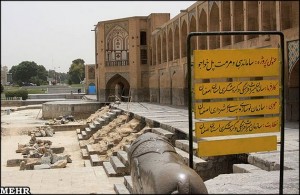
Billboard announcing and delineating the “resotration” efforts at Khaju.
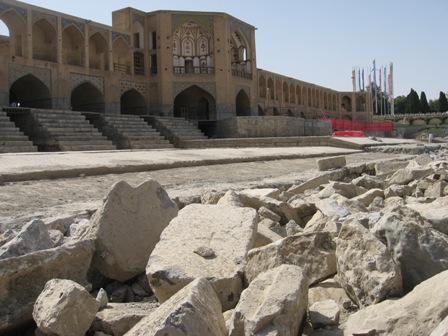
Smashed masonry of Khaju. These were once part and parcel of the Bridge structure, but have been deliberately broken off to be destroyed.
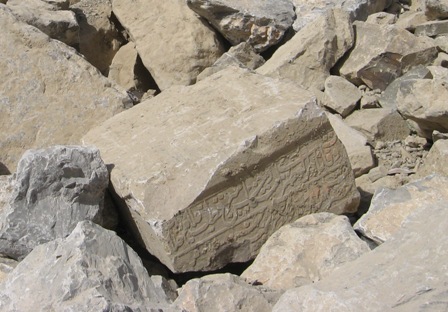
Safaivd era blocks with inscriptions now lie in ruins.
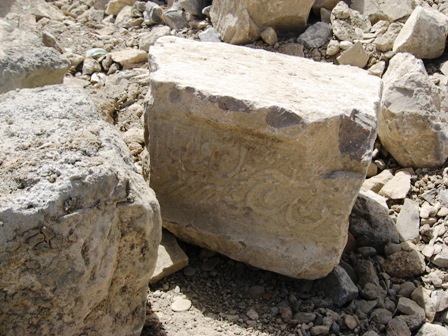
Another example of ruined Safavid inscription works.
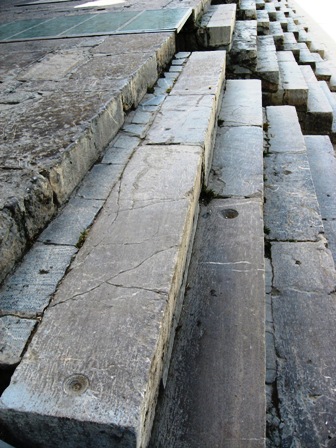
Steps at the base of the Khaju Bridge before their removal by the “restoration” crews.
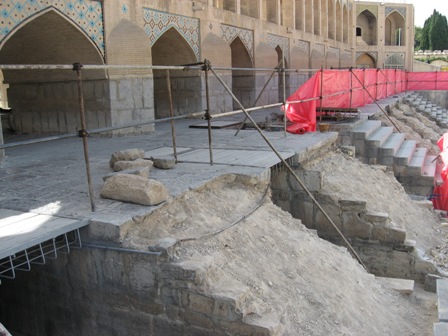
The same stairways with the steps hacked off. The purpose of these actions are not clear, but it is clear that the “restoration” team is not cognizant of archaeology and the historical heritage value of the site.
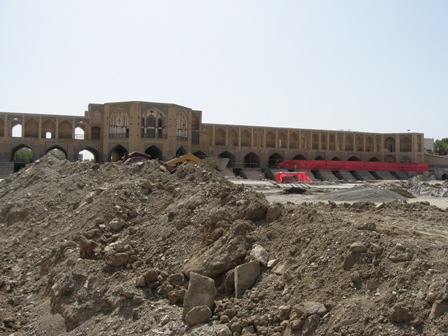
Bulldozers have levelled the area to even out the terrian with the riverbed. There are fears that this action may inflict further long-term damage to the site.
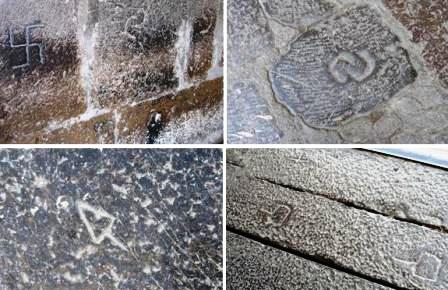
Stones with legends representing “signatures” of the different masons who originally constructed Pol-e-Khaju in Safavid times. These very stones are also being imperilled by the current “restoration” efforts.
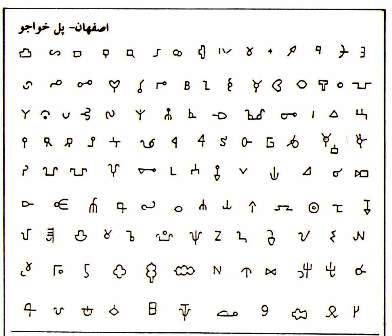
Legend for the symbols seen on the stones at Khaju.
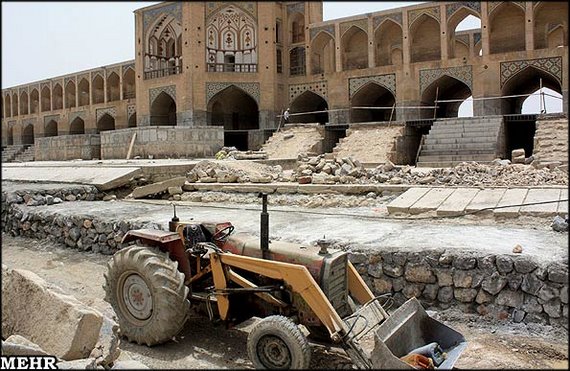
Use of heavy construction machinery for the “improvement” of Pol-e-Khaju. Instead of using proper archaeological tools and competently trained archaeologists, restorers, etc. authorities have often used conventional construction methods, tools and personnel, ultimately resulting in irreversible damage to ancient Iranian sites.
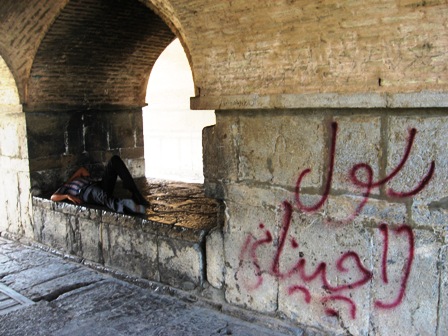
Graffiti vandalism at Pol-e-Khaju. Despite her plethora of ancient and UNESCO-heritage sites, there is no system in place to protect sites from hostile or vandalism-type acts.
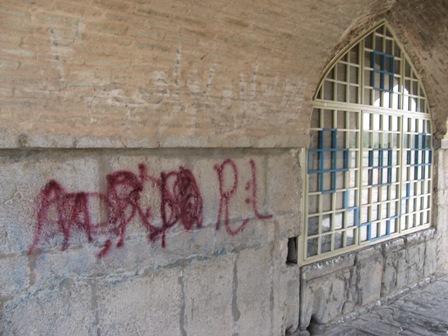
Another example of graffiti vandalism at Pol-e-Khaju.



